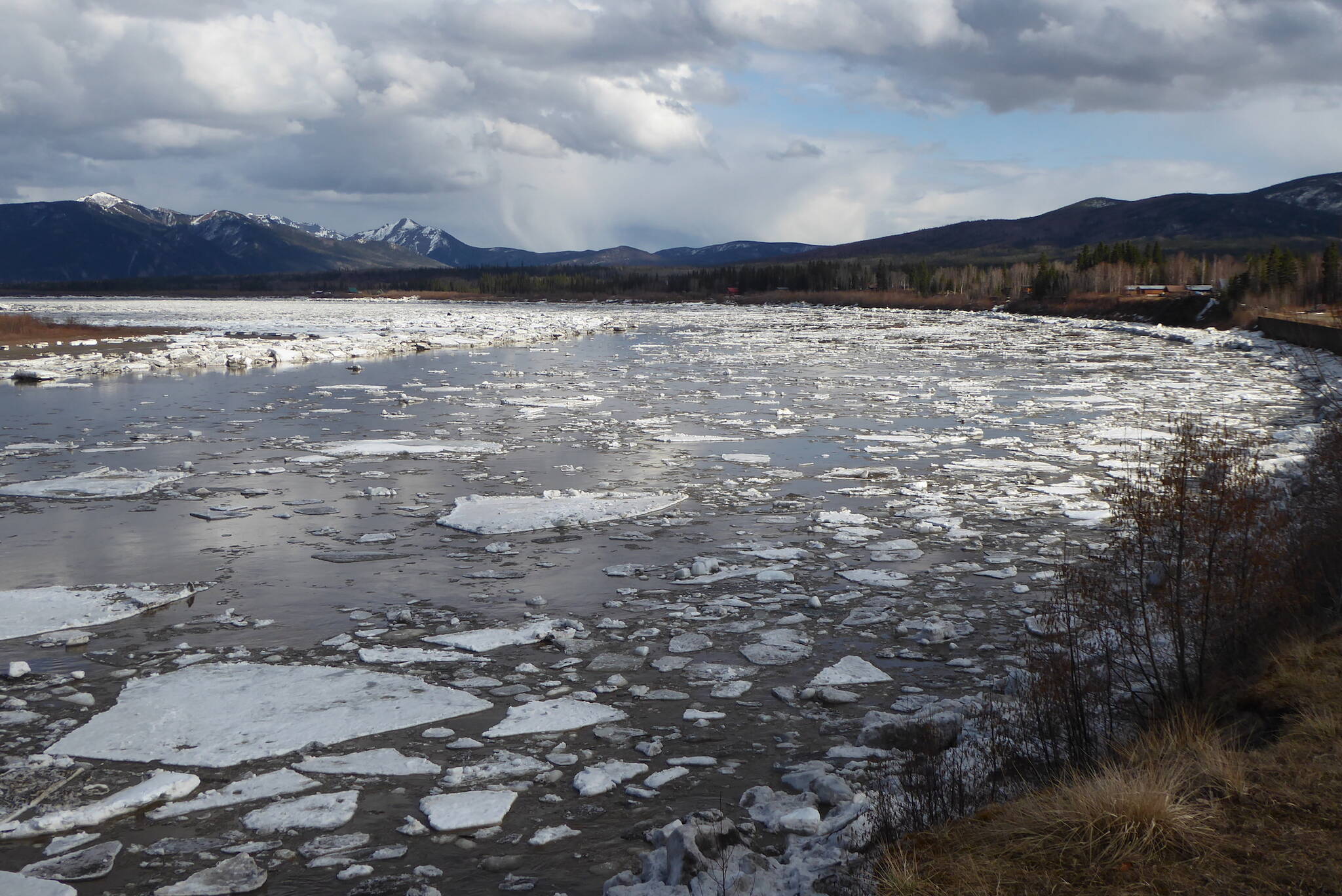By Ned Rozell
EAGLE, ALASKA — While most of the town was sleeping, the ice slipped out.
Breakup happened on the Yukon River here at its first settlement in the United States at around 2 a.m. on Saturday, May 7, 2022. That’s when meltwater rushing from side creeks into the colossal groove of the Yukon lifted a winter-hardened sheet in front of the town.
The shell of ice fractured. A torrent of the cold, brown river water shoved the shards downstream.
Some of that ice — including a football-field size spread with a snowmachine trail still imprinted on top — settled on gravel downstream of town at the mouth of Mission Creek. Most of the jigsaw pieces continued downstream, shrinking every second while exposed to relatively warm water and above-freezing air.
This year featured a gentle breakup here, with no ice-jam flooding at the town of Eagle, nor 12 miles downriver, where Andy Bassich reported all was well at his homesite. More pulses of ice were to come — like the bank-to-bank icebergs set to arrive from Dawson City a few days later — but the first stage of breakup was somewhat benign.
The Eagle townspeople were relieved as they drove their cars and trucks to Front Street to stare at a mesmerizing conveyor belt of moving ice.
“This is what we were praying for,” said Sharon Hamilton, who has lived in this town of about 110 people for many years.
In 2009, she said, her and husband Steve’s Chevy Prism then idling on Front Street would have been under a mountain of ice. That year, the worst flood in Eagle’s recorded history pushed 6-foot thick chunks into the town’s waterfront buildings, shoving some off their foundations, tethered to land by their power wires.
John Borg, who had driven his Toyota Corolla down to Front Street with his wife Betty, was also glad to see the river moving freely.
“At least it’s not sitting here backing up,” he said.
Borg, who came to Eagle in the 1960s, was referring to the happy outcome that pieces from the giant fractured sheets had not stacked in a tight bend about 6 miles downstream.
When all those chunks restrict the flow of the river, water rises fast behind the barrier. Ice-jam floods occur somewhere on the Yukon’s 2,000 winding miles every spring. At the time of this writing, ice had jammed 6 miles downriver of the town of Circle, about 160 miles from Eagle.
In Eagle, as all that ice born of Alaska’s and the Yukon Territory’s cold winter air floated past, Borg overheard someone lament the fact that he had slept through the initial ice movement — the peak drama of that year’s breakup.
“After all these years of watching, I’ve never seen the (first) movement of the ice,” he said. “There’s always next year.”
• Since the late 1970s, the University of Alaska Fairbanks’ Geophysical Institute has provided this column free in cooperation with the UAF research community. Ned Rozell is a science writer for the Geophysical Institute.

